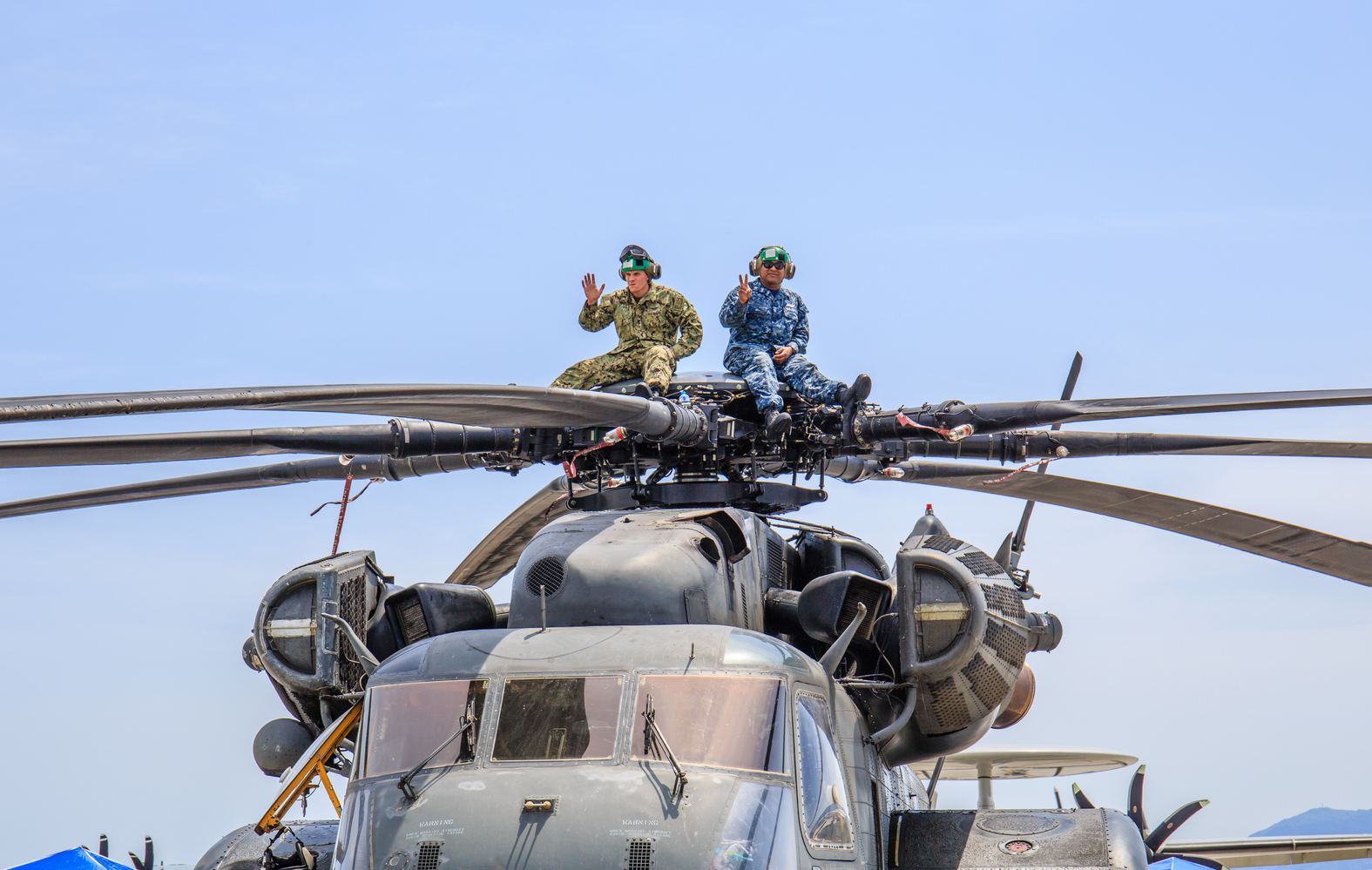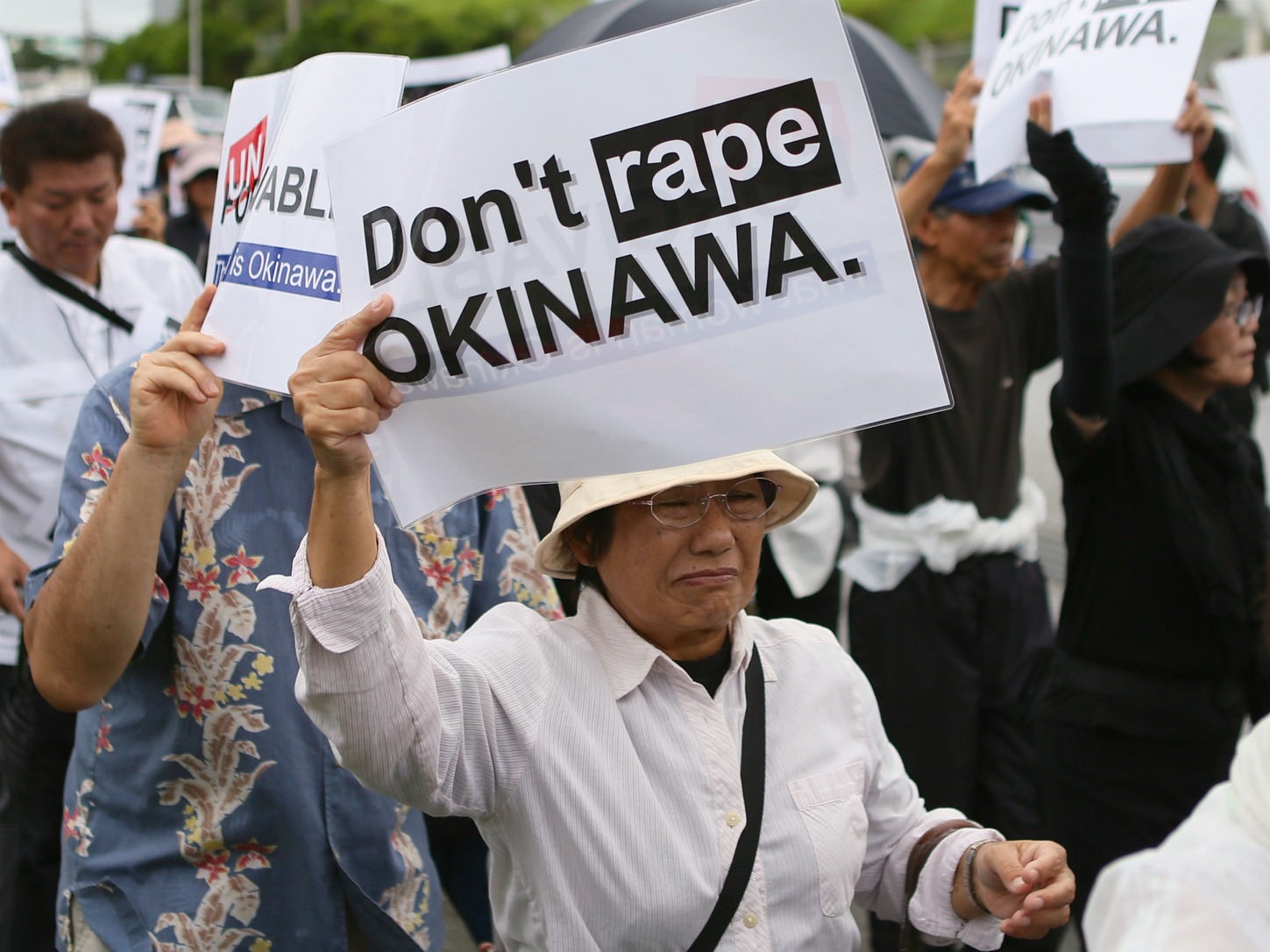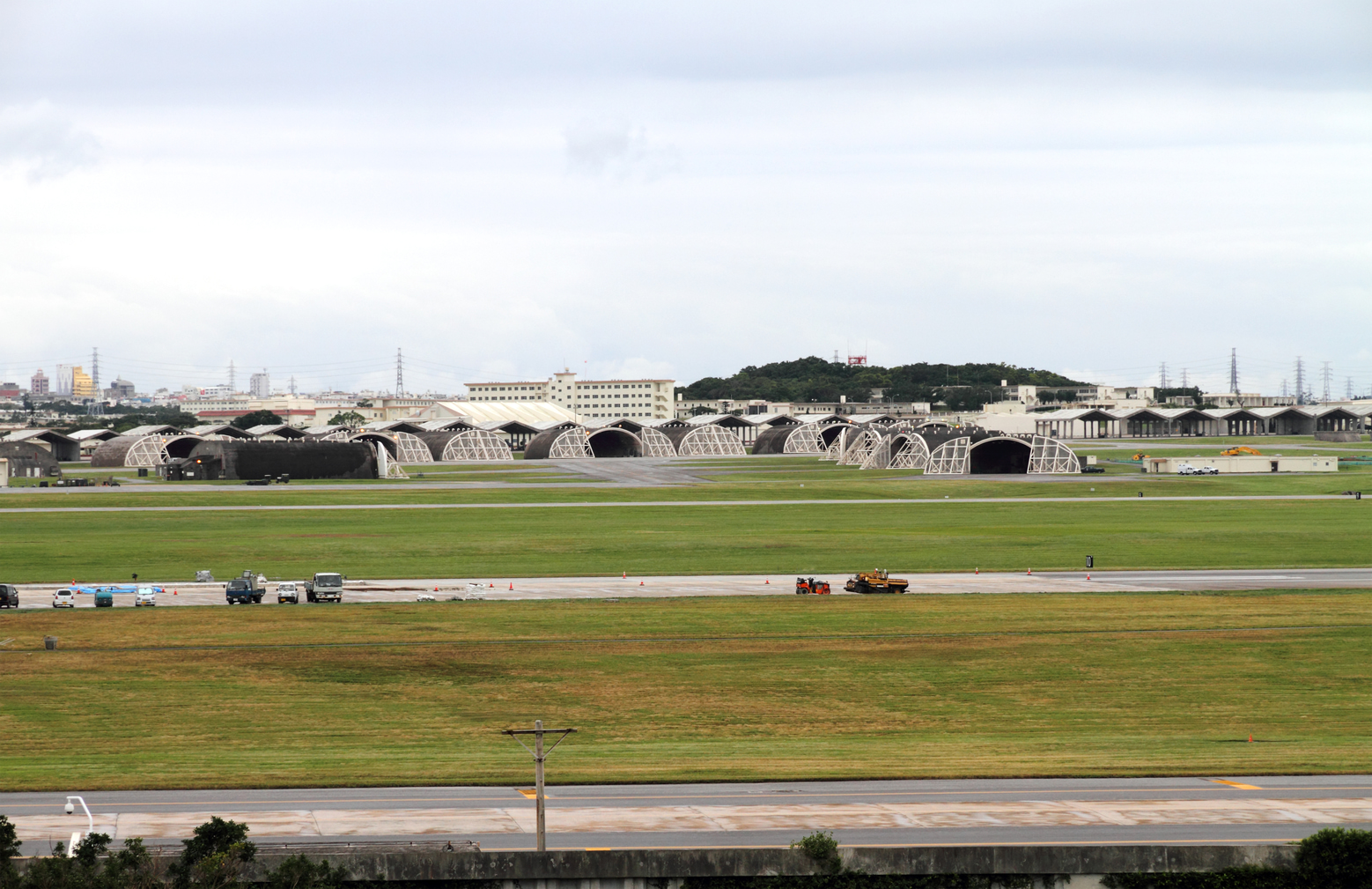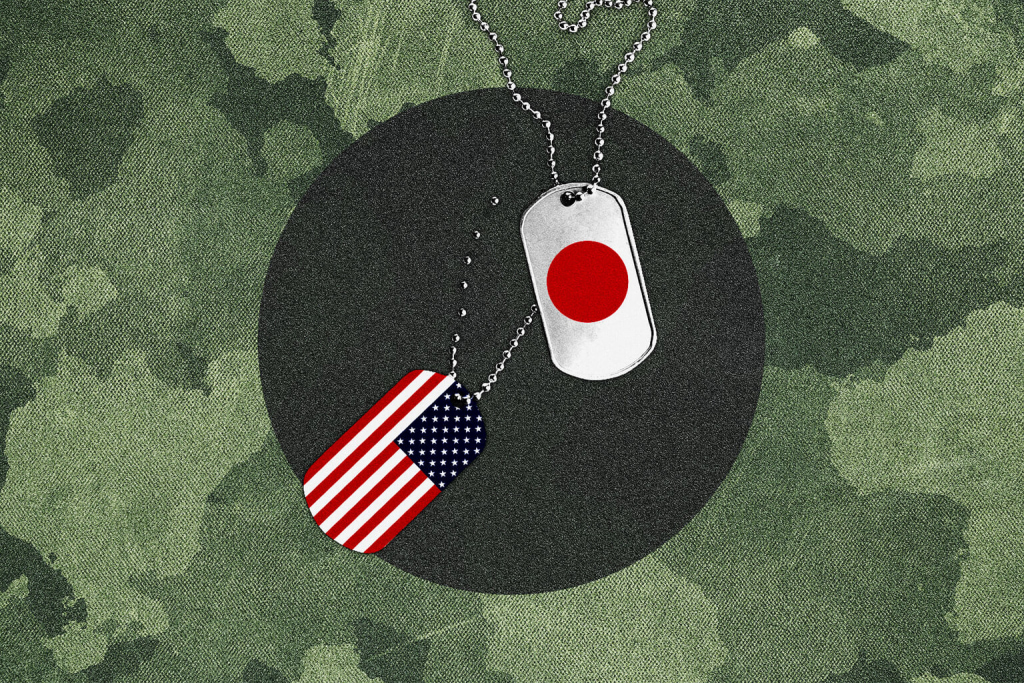When the recent Omicron outbreak in Okinawa was reported to have spread from US military base Camp Hansen, an obligatory public outcry followed in its wake. The dangers are perhaps being blown out of proportion. For all its proclivity to migrate between hosts, Omicron is proving to be one of Covid-19’s more limp variants.
But it is also an argument of principles. From September through late December, the United States Forces Japan (USFJ) did not require vaccinated military personnel to undergo PCR testing when traveling to Japan (this would be later reinstated, along with other countermeasures), despite clear evidence that vaccinated individuals can and do spread the virus. The USFJ claims “respect for and protection of sovereignty” in its official Vision. Bending the otherwise rigid border protocols to suit its own needs, however, is in conflict with such claims.
Moreover, the Omicron outbreak has furthered the case that US military presence in Japan is a relic of the distant past.

‘Vintage Style’ image of a World War 2 US fighter plane shooting down Japanese torpedo bomber over Saipan. (Source: Shutterstock)
The Origins of US-Japan Military Relations
When the Constitution of Japan was drawn by the Douglas MacArthur-led US occupying forces in 1947, it had many inherent, liberalizing virtues. It erased most of the remnants of feudalism, depoliticized the imperial monarchy, bolstered women’s rights and established freedoms of speech and secularism.
Article 9, however, would turn out to be one of its most contentious edicts. It stated:
“Aspiring sincerely to an international peace based on justice and order, the Japanese people forever renounce war as a sovereign right of the nation and the threat or use of force as means of settling international disputes…
“In order to accomplish the aim of the preceding paragraph, land, sea, and air forces, as well as other war potential, will never be maintained. The right of belligerency of the state will not be recognized.”
The abolition of Japan’s military capabilities was largely welcomed by a populous dissenting of wartime imperialism and the state lies and bellicosity that came with it. Traditionalist views of the emperor were also appeased, instating the monarch as a symbolic figurehead.
However, Article 9 proved a shrewd strategical move by the US policymakers tasked with drafting the constitution’s specifics, paving the way for the 1952 US-Japan Security Treaty. As the US officially withdrew from Japan, the security treaty allowed it to establish and maintain military bases throughout the Japanese archipelago with a view to protecting US interests in the East from Soviet invasion. By the end of the decade, at least 50,000 US troops were scattered throughout Japan’s four main islands alone.
It had become clear to many Japanese they had forsaken their own imperial regime only to be replaced by another.

The pilots are sitting on top of their U.S. Marine Corps CH-53E Super Stallion helicopter at a U.S. base on Japan-U.S. Friendship Day, a free event open to the public. (Source: WorldStock/Shutterstock)
The Article 9 Debate
In some respects, Japan bypassed Article 9 by establishing a Self-Defense Force (SDF) in 1954. This was effectively an extension of the police only to be used for protection on Japanese shores with the minimum amount of force. Though it’s now a robust military to all intents and purposes, the legal language doesn’t recognize it as such. This has caused countless debates in the National Diet.
In November 2021, as Fumio Kishida took head office amid campaign pledges of increased military spending, 77 percent of his recently elected House of Representatives stated they were in favor of constitutional reforms. It’s not clear which parts they intended to revise, though more hawkish sections of the governing Liberal Democratic Party would likely aim straight for Article 9 (which would have to pass a national referendum).
The security treaty also remains in effect, with Japan recently agreeing to $1.85-billion annual funding for US troops from 2022 through 2026. Although notable, it pales in comparison to the largesse of Japan’s new record five-year defense budget, set for fiscal 2023 and totaling $264 billion, which puts it in the top 10 nations globally for per-year military spending. Most of this has been earmarked for SDF equipment and defense programs including cybersecurity and satellites.
The government’s desire to bolster Japan’s military capabilities and the US’s desire to maintain troops in-situ are founded upon the same fears: the rise of China as a post-industrial superpower (as well as potential threats from Russia and the Korean Peninsula).

2,000 rally in silent protest with banners and placards in front of U.S. Marine Camp, mourn the death of a woman who was raped and killed by a former US marine. (Credit: austinding/Shutterstock)
US Forces Stir Trouble in Japan
Okinawa, host to over half of the approximately 55,000 US military personnel in Japan, has long bore the brunt of the US-Japan alliance. It’s grim symbolism for an island that witnessed one of the bloodiest battles of World War II, claiming the lives of approximately 110,000 Japanese soldiers and 100,000 civilians (a quarter of the entire population).
While local polls favor the alliance, Okinawans question the need for the majority of the military presence to be based on their islands.
Sexual assault cases involving the US military have been reported consistently since the 1940s. From 2015 to 2020 alone, 69 Okinawa-based Marines were convicted of sexual offenses involving minors. While only 18 percent of military-affiliated suspects were indicted between 2007 and 2016, dropping to 15 percent in 2020. The US enforces extraterritorial jurisdiction on its military personnel, through the Status of Forces Agreement (SOFA), often allowing offenders to avoid judicial proceedings in Japan. This often leaves victims without justice.
One particularly brutal case of three soldiers raping a schoolgirl and leaving her defiled, unconscious body by the roadside in 1995, shed light on the brazen attitude towards sexual assault. The incident resulted in an 85,000-strong protest on the streets of Okinawa, a subsequent “Me Too” movement and ultimately the conviction of the perpetrators. But as Christopher Harding notes in his book, Japan Story, “The commander of the United States Pacific Command told a press conference that the three soldiers had been stupid — because for the price of the rented car they could have bought a prostitute.”
The US has also been polluting the drinking water of 450,000 Okinawans since at least 2016, thanks in part to highly toxic chemical spills at Kadena Air Base and Futenma Air Station, respectively. Japan subsequently spent millions of dollars trying to filter pollutants from the water.
Closer to the mainland, the US military in coordination with the Japanese government is in the process of destroying the richly biodiverse island of Mageshima to make way for a base on which the former can conduct Field Carrier Landing Practice (FCLP) drills, with a subsequent landing strip set for the UNESCO-recognized island of Yakushima.
And now the outbreak of a virulent disease has been added to the list of USFJ infractions.

US military base in Okinawa, Japan. (Source: Shutterstock)
The Future of US-Japan Military Relations
With Japan’s exorbitant spending on the SDF far outweighing the cost of supporting US-based troops, there is a strong case for reforming the security treaty. This is only furthered by a US presence which has deeply affected, and in some cases devastated, the lives of locals in Okinawa and elsewhere in the archipelago. Reforming the treaty could coincide with Article 9 revisions, though any drastic changes may foment concerns across the East China Sea and amongst members of the public who fear a return to Japanese militarism.
Whatever the course of action, Japan need not break its useful military alliance with the US entirely. Thucydides Trap infers that war is more likely than not and Japan maintains rather noisy geographical neighbors. But the US is the clear beneficiary of the current military agreement. It’s time to send the troops home.
Top and feature image by Anna Petek









